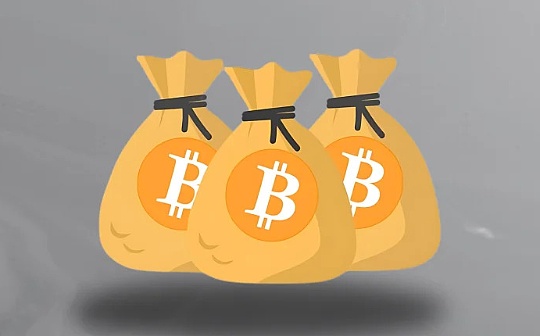
Author: James Butterfill, Max Shannon, Alex Schmidt, Satish Patel
Source: coinshares
Translation: Shan Ouba, Bitchain Vision Realm
summary
-
Growth and sustainability: Bitcoin mining network increased by 90%in 2023, which caused people to question its environmental sustainability and profitability, especially the efficiency and energy cost of the network.
-
Mining dynamics and computing power trends: The “difficulty” adjustment mechanism of Bitcoin mining ensures the non -elasticity of the supply.After halving, the cost -effective miners may fall into trouble due to the reduction in direct revenue.This document evaluates the average production cost of each bitcoin after halving, and the results show that the average cost is $ 37,856.
-
Efficiency of mining networks: Although the power demand of the network has continued to increase, efficiency has improved significantly.Using random data to help analyze the efficiency of different mining models.At present, the average efficiency of the network is 34W/T, and it is expected that it may drop to 10W/T by the mid -2026.
-
Bitcoin mining and environmental impact: Bitcoin mining usually uses retention energy and is usually located in remote areas.Daniel Batten said about 53% of Bitcoin mining energy is sustainable.Bitcoin mining can significantly reduce emissions caused by natural gas burning, which is a major environmental problem.
-
Financial analysis of miners after halving: After half in 2024, the production cost and profit structure of miners will change.Our analysis focuses on different cost structures of listed miners and their fragility for halving.
-
Conclusion and mining dealer’s positioning: Most miners will face the challenges of high SG & AMP; a cost, and need to reduce costs to maintain profitability.If the price of Bitcoin remains above $ 40,000, it is expected that only a few miners can be profitable.
Growth of Bitcoin mining network
Bitcoin mining network has experienced rapid growth. By 2023, computing power will increase by 104%.This rapid expansion has caused people to worry about its sustainability, both from an environmental perspective or from the profitability of the mining network.In this document, we aim to solve these two problems.The final result of the average production cost of each miner after each Bitcoin is reduced by half, which highlights the average production cost of $ 37,856.
>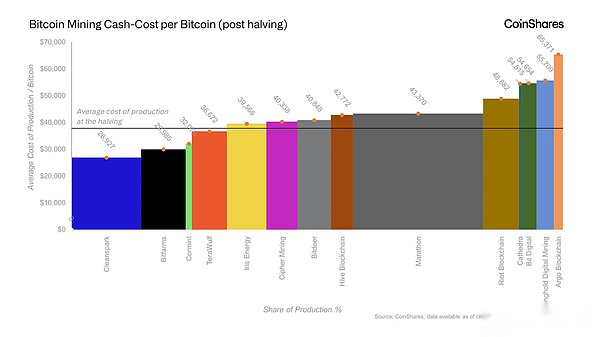
Although there are some similarities between Bitcoin mining and traditional mining, they consume energy to generate valuable assets, but the similarities are basically limited to this.The unique self -adjustment mechanism called “difficulty” adjustment in Bitcoin mining can ensure that the supply remains strictly non -flexible.At a certain time at the Bitcoin mining cycle, the high -end miners at the cost curve will begin to suffer losses, and the hash rate will begin to decline because the price increase is not enough to offset the increase in mining difficulty.
Regardless of whether the number of miners is 2 million or 2 million, the number of newly created Bitcoin remains unchanged until the next reducing half.If the collective computing power of the network increases significantly, the difficulty of mining will be adjusted upward to maintain the target productivity, thereby squeezing the cost of higher costs out of the market.Our analysis focuses on the different cost structures of listed miners, as well as miners who are most likely to be affected in April 2024.
In order to predict the future direction of computing power, our best way is to analyze the historical model.Qualitative reasoning shows that growth will be driven by the price of Bitcoin: Active growth prospects may encourage miners to increase composition power and believe that it is favorable.However, this depends on the assumptions of future prices.
The retrospective of historical data shows that mining activities have increased between halves.However, due to its exponential growth, it is determined that a clear cycle is challenging -we have done some work in this regard.Because computing power is often an unstable number, the use of historical data trends is more accurate than pure qualitative methods.However, a key issue is that most trend lines include future information, which means that the trend line we see today will be different in the past.Therefore, the most reliable method is to calculate a trend line based on the data outside the sample, which is not affected by future development.
>
The data reveals an interesting regular pattern between the half -cycle, which shows that from the historical perspective of this cycle, the current computing power peak value is not uncommon.The figure below clearly illustrates this trend, and the chart clearly shows the periodicity of these changes.
>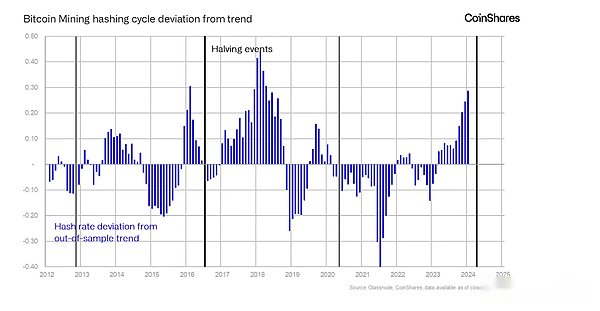
Since the first Bitcoin in 2012, and since the subsequent half in 2016 and 2020, a model has occurred, that is, the computing power after halving the computing power usually decreases about 9 % compared with the trend line.It lasts about six months.Some special in 2020. Due to China’s mining ban, this period was greatly extended, resulting in a price below 42%below the trend line.Nevertheless, this model usually involves the initial decline in computing power, and then recovered halfway through the cycle, and then the activity surged about one year before the next halving.
This cycle is logical: In order to maintain its competitiveness in the expectations of halves, miners have increased capital expenditure, making computing power significantly higher than the trend.After half, the decrease in the direct income of the miners has affected their capital expenditure cycle.The current cycle is no exception.It is worth noting that the peak value of computing power usually occurs in about four months before the decrease. This may be due to the “Bitcoin boom” that causes mining difficulties to soar, which forces a higher production cost to withdraw.The current mining difficulty is at a historical high, and it is consistent with the “relative” peak observed in the previous cycle.
What will happen to the future of Bitcoin?Guided by the historical trend, we may expect that the computing power will return to the trend line of about 450EH/s (Exahash per second per second) when it is halved in April 2024.Six months later, it may drop to 410EH/s further.Since then, the trend line has predicted that at the end of 2024, the computing power will increase sharply to about 550EH/s.
>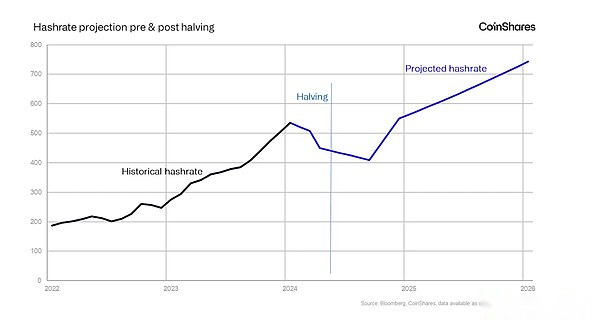
Half this time may eliminate those who are at high -end cost curves, so that those who have sufficient liquidity have the opportunity to buy hardware at a discount price.This situation depends to a large extent on whether the price rises to the average production cost of each miner, and it may require a significant decline in prices, or the transaction costs have fallen significantly, such as the decline in the order of order.
Improve the efficiency of mining networks
At present, there are many mining equipment used in Bitcoin, covering a series of power consumption levels, computing power and the efficiency generated by it.Historically, this diversity has made the overall efficiency of determining the mining team is challenging.Karim Helmy of CoinMetrics used random data for hardware fingerprint recognition to conduct some noteworthy research.In order to avoid too deeply studying technical details, we found that each miner model will leave obvious “steam marks” on the Bitcoin blockchain.Then you can analyze this unique signature to determine the distribution of different mining models in the network.
>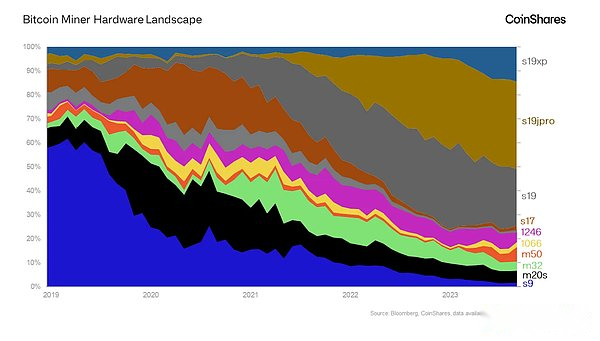
Because the efficiency of each mining model is based on W/T (Wat/Tairahash), the overall efficiency of the entire Bitcoin mining queue can be calculated.Given that this path is quite linear, the future trend can also be predicted.At present, the weighted average efficiency of the network is 34W/T.In this year alone, efficiency has increased by 8%. In the past three years, efficiency has increased by 28%.According to these trends, it is expected that by the mid -2026, with the continuous improvement of chip design and the launch of more efficient mining hardware, the efficiency level may be as low as 10W/T.
>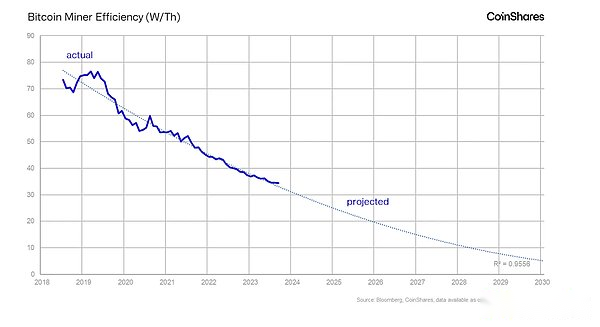
Bitcoin mining always pursues the cheapest energy, which often leads to the use of stranded energy, that is, it cannot be easily sold to existing power grids.Generally, this involves renewable energy projects located in remote areas.Therefore, the trend of using sustainable sources for Bitcoin mining operations is becoming increasingly obvious.According to the estimation of Daniel Batten, about 53% of the energy used for mining Bitcoin is now a sustainable source.This proportion has exceeded the financial industry. As Daniel Batten pointed out, only about 40% of the energy consumption of the financial industry comes from sustainable energy.
Although the computing power has recently risen significantly, it is in stark contrast to the continuous decline in network efficiency (that is, improved).
>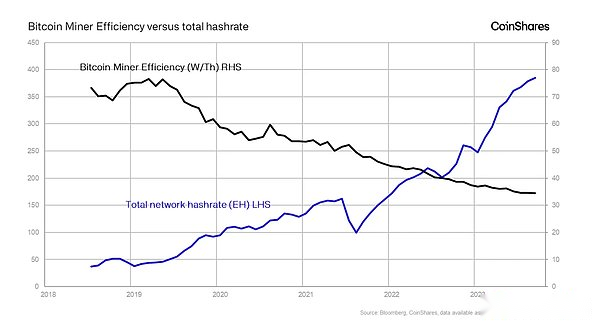
The details of Coinmetrics random number data have reached a new level, which means that we can estimate the annual power cost, which is very close to the estimation of Cambridge University.
>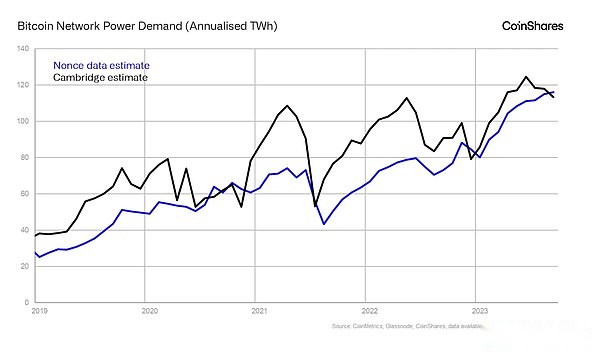
The data emphasizes that although the efficiency has improved significantly, it is calculated by the year, and the demand for network power has reached a record high of 115 Taiwa time (TWH), which has increased by 44%this year.However, due to the continuous improvement of efficiency, this growth is relatively mild compared to the growth of comparative power.
Daniel Batten’s research on mining emissions shows that the amount of emissions has decreased significantly, although some data sources used are difficult to track.Since 2021, the discharge has been reduced from nearly 600 grams of carbon dioxide per kilowatt -hour to only 299 grams of carbon dioxide per kilowatt -hour.This reduction may be attributed to the significant increase in sustainable energy use, from 33% in 2021 to 52% today.According to IEEFA data, ERCOT (Texas) Grid fuel combination reflects this to a certain extent. A large part of the Bitcoin mining occurs.% Increase to 31% in 2023.
>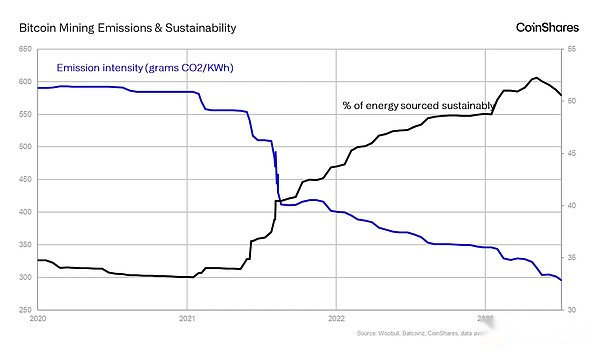
Bitcoin helps reduce carbon emissions
As the recent report of BBC emphasized, natural gas burning is becoming an increasingly serious problem.This report attracted people’s attention. The practice of oil drilling activities in the Gulf area and related burning too much natural gas have brought millions of people a more serious threat than previously understood.Although combustion emissions are more environmentally friendly, according to Mesa Solutions, combustion can reduce the amount of carbon dioxide emissions by 92%, but its wide use is still worrying.The image from Skytruth shows the severity of this global problem, and the yellow dot vividly marked the area where the spots are on the spot.
>
World BankestimateBy 2022, about 139 billion cubic meters of natural gas in the world was burned.This number is equivalent to the total of the total number of natural gas consumption in Central America and South America.Based on Mesa SolutionsdataAt present, the tradition of combustion methane will cause 59 grams of carbon dioxide (CO2E) per 1,000 British thermal units (BTU).In contrast, using modern turbine generators only emit 22 grams of carbon dioxide per 1000 BTU.This means that the amount of emissions has been reduced by 63%, and the degree of pollution is three times that of gasoline power vehicles.
>
The main challenge of the torch burning is that the energy it involved cannot be stored or transported economically, so it is often burned.This situation usually occurs in remote areas that cannot connect to the grid or pipeline.We believe that Bitcoin mining can greatly reduce emissions caused by combustion.This is because the mining hardware and the necessary generators can be installed in the container and running in the remote areas far from the built -of -the -aged power grid.
In addition, torch burning is usually>>>>>>>>>>>>>>>>>It will causeThe incidence of methane leakage is higher.This phenomenon occurs when a small part of the natural gas fails to burn completely and escapes into the atmosphere. This situation is especially common under the conditions of strong winds.In contrast, as we all know, the turbine is one of the turbines with the lowest methane leakage rate, which can greatly reduce the risk of such incidents.
>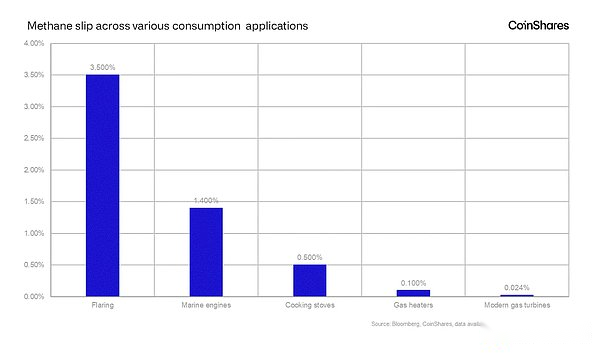
At present, natural gas burns are discharged by about 4.06 million tons of carbon dioxide each year.However, if all natural gas currently burn is used for Bitcoin mining, these emissions may be reduced to about 152 million tons of carbon dioxide.Due to the current global torch combustion account for 1.1%of global carbon dioxide emissions, Bitcoin mining can reduce the global torch burning emissions to 0.41%of global emissions.
As of now, it is known that only about 120 MW (MW) bitcoin mining capabilities are using the energy of stranded natural gas.Therefore, if Bitcoin mining expands the use of this waste of torch gas, it has a significant potential to significantly reduce global emissions.
The impact of halving Bitcoin miners
In this research article, we estimate the weighted average of production costs and cash costs in the third quarter of 2023. Each bitcoin is about $ 16,800 and $ 25,000, respectively.After the estimated half -half incident in April 2024, these costs are likely to decrease to $ 29,300 and $ 38,100, respectively.Due to its efficient cost structure and long runway, Riot looks most capable of cope with these changes.Our analysis of the financial statements of listing and private miners assumes that the price of Bitcoin is $ 40,000, and most of the pain that miners will face may stem from bloated sales, general and management costs (SG & AMP; A) costs.
method
Our financial analysis methods for the third quarter of 2023 include formulating and adjusting the income profit and loss sheet.This standardization applies to the mining business of 14 miners, 13 of which are public listed entities. As of December 2023, it accounts for 21%of all bitcoin computing power mining.450 EH /s.Our data in the third quarter of 2023 mainly comes from the public information in the SEC documents, website production reports or necessary estimates.
Our method includes:
-
Income costs represent the cost of mining income, mainly the cost of power.
-
Sg & amp; a eliminates non -cash expenditure, such as stock -based salary and one -time payment.
-
Interest costs only consider debt interest, excluding lease costs or other financial expenses.
After the halving incident, the direct cost of the production and operation profit and loss balance changed sharply at $ 29,300 and $ 38,100, respectively.This change is the result of halving block subsidies.The method for our prediction of income and expenditure is as follows:
-
The market share of the computing power is determined by the estimated computing power disclosed by each company. With the percentage of the 450 network EH/s at half when we estimate the percentage of 450 networks, it is about 10%compared with 500EH/S.
-
The cost of production is calculated from the bottom -up method, including the team’s efficiency, power cost, and kilowatt -hour use (the utilization rate of the third quarter of 2023) and the number of Bitcoin for mining.
-
Assume that SG & AMP; A cost is consistent with the third quarter of 2023, because the company’s expenses are expected to not change significantly due to halving.
-
Interest costs are determined to be a non -paid amount of principal (if possible, amortization) to the sum of regular interest rates.
-
Our comprehensive methodology ensures standardization and comparable financial analysis of the minus half -and -after situation, thereby effectively guiding our operating decisions.
Miner computing
>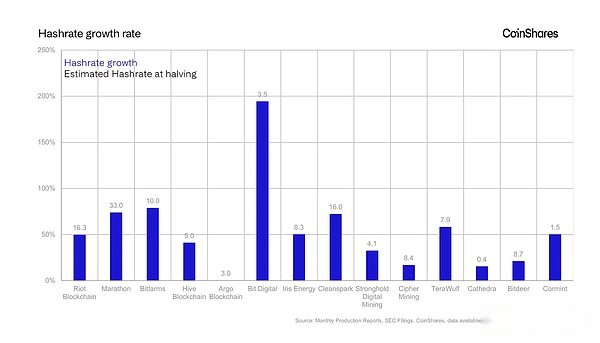
On average, on average, the Bitcoin network will be calculated by the miner correctly (“guess”) hash (pseudo -random 64 -bit letters) to generate a block, while the rest of the network verify its correctness.Miners with more computing power (more drilling rigs, leading to more computing power) control a greater percentage of network computing power, so there is greater opportunities to create a block and get block subsidies (currently 6.25 bitcoins,However, it will be reduced in April 2024), as “halved”, the price is 3.125 Bitcoin) plus transaction costs.Miners are essentially in the military reserve competition to buy and insert as many machines as possible.
The more the miners are used for self -mining rigs, the greater the required data center.This huge capital expenditure is either provided by cash, equity or debt. The latter may damage the total production cost of the miners due to higher interest expenditure and make them risks during the period of Bitcoin.For example, according to documents in the third quarter of 2023, Core Scientification entered Chapter 11 at the end of 2022, or MAWSON failed to pay Marshall loans (these examples are not detailed), which is obvious.
Number of Bitcoin produced
The number of Bitcoin produced is indispensable for the economic and cost structure of each miner.For miners, to achieve the same Bitcoin output as before halving, they need to double the market share. Considering that the compound annual growth rate of network computing power in the past three yearsThis is very challenging.Blocks need to fully make up for the reduction of block subsidies caused by half.
>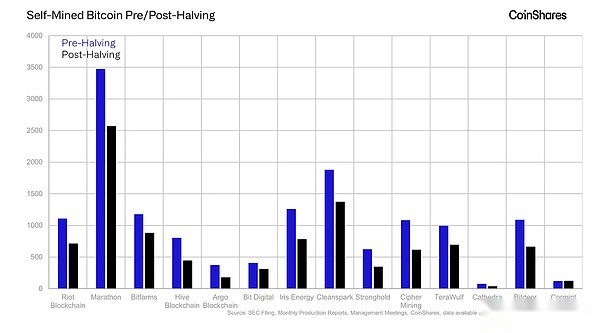
Electricity fee
The cost structure of Bitcoin miners is two input functions: energy and equipment.The average public miners we tracked average energy per kilowatt -hour energy per kilowatt -hour.This kind of energy is purchased in the wholesale market. It is most likely to negotiate in the spot or futures market, or through the power purchase agreement (PPA) contract with energy suppliers. The contract usually provides a fixed energy price, but it usually involves photos payNo clause.However, miners have more control over their groups, and they can reduce energy costs by investing more efficient machines. Each of these machines consume less electricity.
Among the public miners we track, the efficiency of the entire mining machine group is expected to decrease from 29W/T to 26W/T when halved.In the latest machine transactions of Cleanspark and Iris Energy, we can see how the miners upgrade its fleet to improve the efficiency (that is, reduce W/T). Among them, each transaction purchases 4.4EH/s and 1.4eh/s Bit mainland Antminer.The efficiency ratio of the S21 mining machine is 17.5W/T, and the price is about $ 14/Th (each Tarahah USD).
The following matrix shows that although the T21 is a newer model, the S21 is better than all other drilling machines in each power and computing power price scenario, because it has higher computing power (affecting income) and lower power consumption consumption.(Impact cost).
>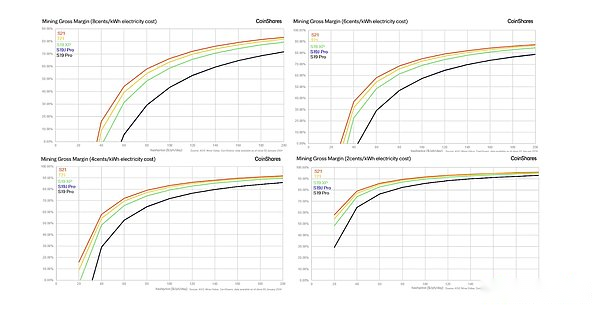
The figure below shows changes in the efficiency of the fleet before and after halving.Please note that although most miners are improving the efficiency of the entire team (W/T), their direct cost structure has not improved.This is because, as mentioned earlier, miners need to increase power consumption and energy consumption to minimize the same amount of bitcoin.Around halfway, the weighted average of the power cost of each bitcoin in the cash cost structure accounted for approximately 68% and 71%, respectively. Among them, the slight growth was mainly due to the slight increase in scale and energy prices.
>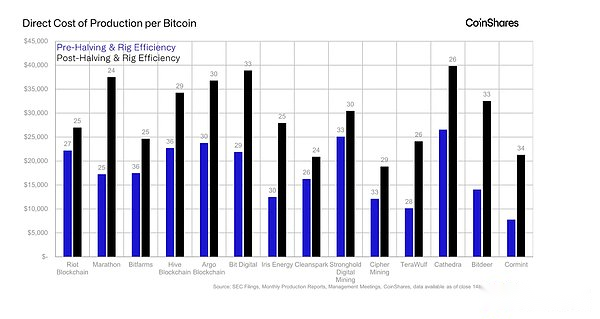
Miner runway
We define the runway as the number of days that miners can use cash and Bitcoin reserves to repay cash operation expenditure.There is no standard fund management strategy throughout the industry.Some people have accumulated their output as much as possible, also known as “HODL”, while others do not do so, but choose to sell Bitcoin when producing Bitcoin.Miners with sufficient capital and large Bitcoin balance may get higher equity premiums in the bull market, such as RioT.However, the combination of low runway and high cash costs makes miners such as Stronghold face the risk of low price of Bitcoin.
>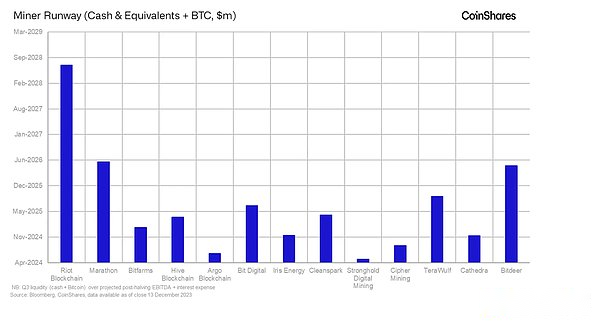
Cash production cost
We believe that Riot, Marathon, Bitfarms and Cleanspark are in the best position during half.One of the main problems facing miners is the huge SG & AMP; A cost.For miners, to achieve a balance of revenue and expenditure, the reduction may force them to reduce the cost of SG & AMP; A, otherwise they may continue to lose money and have to clear their HODL balance and other mobile assets.
Note: The data of Iris Energy and Cormint is based on documents, management meetings and monthly production reports based on the second quarter of 2023
>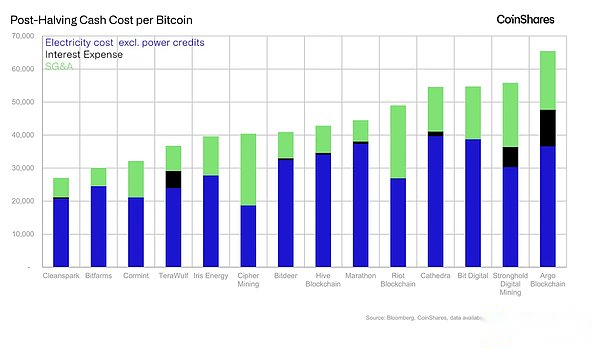
in conclusion
Our analysis shows that RIOT seems to be the most capable of responding to the complexity of the minus incident, mainly because of its long runway, lower debt and power costs, and sales management costs (SG & AMP; A).Miners may experience most of their experiences from huge sales, management and administrative expenses, and these costs may need to be reduced to maintain profitability.
Overall, unless the price of Bitcoin remains above $ 40,000, we believe that only Bitfarms, Iris, Cleanspark, TERAWULF, and Cormint can continue to make profits.All other miners may eat their runways and eventually forced the stock price to further dilute, because they are likely to increase their equity or convert debt.
>
Note: Iris Energy is based on the second quarter file, and Cormint is based on the second quarter of data
Elementary error: Marathon’s computing power growth estimation and the cash cost of each Bitcoin are underestimated -have been revised to reflect 33 EH, and reduce the cash cost of each Bitcoin to $ 43,370.


